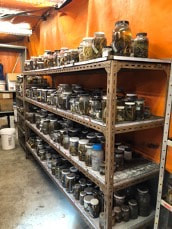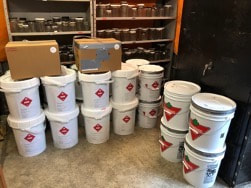 Photo 1. Part of Dr. Reimchen’s collection at the University of Victoria. Image credit: Sarah Sanderson Photo 1. Part of Dr. Reimchen’s collection at the University of Victoria. Image credit: Sarah Sanderson The data rescue intern: Sarah Sanderson For more than five decades, Dr. Thomas Reimchen has conducted extensive research on the threespine stickleback (Gasterosteus aculeatus) of Haida Gwaii (X̱aaydag̱a Gwaay.yaay), a culturally- and ecologically- significant archipelago off the coast of British Columbia. Threespine sticklebacks are an important model system in eco-evolutionary biology, and while the species is found across the Northern Hemisphere, those found in Haida Gwaii are particularly distinct. In fact, the sticklebacks of Haida Gwaii show as much phenotypic variation in this one small area as can be found across their entire Northern Hemisphere range.  Photo 2. Packing of the collection for transfer to the Redpath Museum. Image credit: Sarah Sanderson Photo 2. Packing of the collection for transfer to the Redpath Museum. Image credit: Sarah Sanderson In light of Dr. Reimchen’s impending retirement, his collections of specimens and data are being transferred to the Redpath Museum for permanent storage and showcase. The collection spans from 1969 to 2020 and consists of specimens and data from over 140 locations (lakes, estuaries, and streams) across the archipelago. Two of these lakes have been sampled annually and represent a comprehensive dataset of the lakes’ ecology: Drizzle Lake (35 years) and Boulton lake (20 years). The first goal of the Living Data Project data rescue internship was to ensure the proper transfer of the physical specimen collection from Dr. Reimchen’s lab at the University of Victoria (see Photo 1) to McGill’s Redpath Museum for long term storage. This transfer involved the development of a system to uniquely identify and track samples. The internship also involved the review of data for archiving in close collaboration with Dr. Reimchen. This process involved the curation, cleaning, and generation of detailed metadata for several datasets, including: Haida Gwaii biophysical dataset, Haida Gwaii stickleback egg dataset, breeding red throated loons at Drizzle Lake, bird observations at Drizzle Lake, Banks Island dataset, Boulton lake stickleback dataset, Haida Gwaii fish dataset, Drizzle Lake fish dataset. The intern, Sarah Sanderson, spent 6 weeks at the University of Victoria preparing the specimen collection to be transferred to the Redpath Museum and working with Dr. Reimchen to archive the associated datasets. The specimen transfer involved an inventory of the collection and the transfer of specimens into diluted ethanol for safe transport (see Photo 2); these thousands of preserved specimens were then loaded up for the 4,700 km journey from Victoria to the Redpath Museum in Montreal. The archiving of the datasets involved proofing, separating or combining datasets when necessary, adding missing data, linking geo-coordinates, and describing the metadata. The specimen collection is currently held at the Redpath Museum where it will be permanently stored. Future work will involve a showcase of part of the collection and archiving of two additional datasets: Haida Gwaii threespine stickleback geometric morphometric and genomic data. We are currently in the process of making the data publicly available on the Redpath Museum database. Comments are closed.
|
Archives
October 2023
Categories |

 RSS Feed
RSS Feed